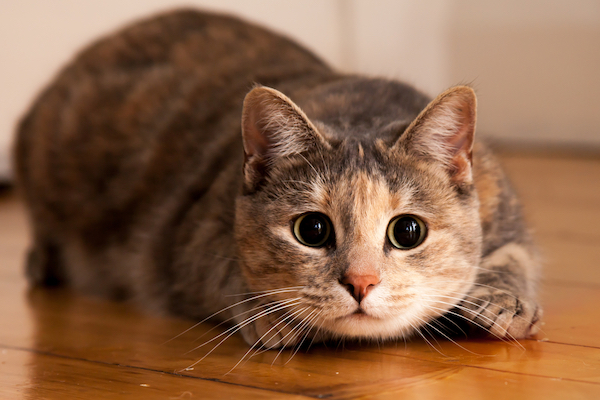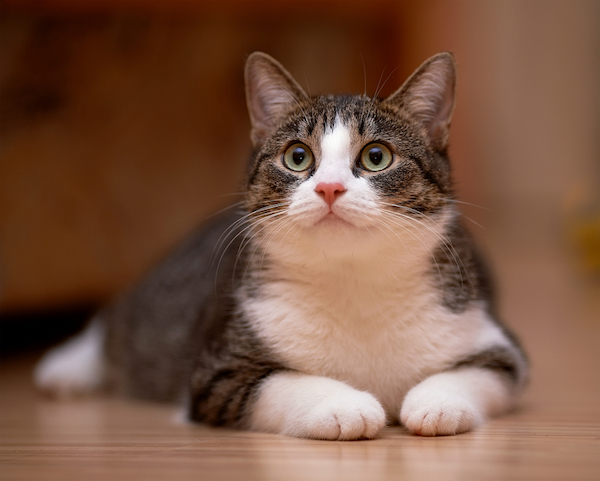Feline Distemper: A Cat Health Threat
Posted: 05/30/2022 | BY: Erin Cain | Categories: Cat , Health problems , Pet care
If you’re a cat owner, then it’s essential that you know about feline distemper and how to protect your furkid from this serious health threat. Feline distemper is a highly contagious viral disease that affects the cat’s immune system and causes serious health problems. This blog post will discuss the symptoms of feline distemper, how it is transmitted, and how to protect your feline friend from it.

What is feline distemper?
Feline distemper is a viral disease that results in severe illness for infected cats. Also known as feline panleukopenia, it is highly contagious and is contracted in various ways. Your cat may already be vaccinated for this disease, but it’s important to know how they are still at risk and what you should do if they become infected. In particular, young kittens are highly susceptible to this virus as they are still growing and developing in the early weeks and months of their lives. Although feline panleukopenia virus has some overlap with symptoms of feline immunodeficiency virus and feline leukemia virus, they are different diseases.
The feline parvovirus, a single strand-DNA virus, is the culprit behind feline distemper. It infects white blood cells, stopping them from rapidly growing or dividing. When that occurs in cells located in places like the bone marrow and intestines, significant damage happens to the stomach and intestinal tract lining. White blood cells play a critical role in supporting the immune system and protecting cats against infection and disease. Once that white blood cell count drops too low, the cat is potentially exposed to a secondary infection.

Which cats are prone to this disease?
If you have a cat, then it’s likely your furry friend has been exposed to the feline distemper virus at some point in their life. The virus is everywhere in the environment; thus, cats of any age may become infected. The most susceptible cats are young kittens, unvaccinated cats, and sick cats. Feline distemper virus is found most often in kittens between three and five months old, and mortality rates are high, over 90%. A sick cat is more likely to die from the feline panleukopenia virus.
How does the virus infect cats?
Because it is highly contagious, this virus has spread to all parts of the United States and many countries worldwide. These outbreaks are primarily happening in the following areas:
- unvaccinated feral cat colonies
- animal shelters
- kennels or boarding facilities
- pet shops or stores
- anywhere that cats congregate and are housed or have contact with an infected cat
The virus seems most contagious in urban locations during warmer weather, when cats are more likely to come into contact with other cats.
An infected animal can shed the virus through nasal secretions, nasal discharge, urine, and stool. Infection occurs when a healthy cat comes into contact with the infected cat’s secretions or excretions. It’s also possible for fleas from infected cats to spread the virus. Although virus shedding lasts only one or two days, the virus can live for up to a year in the environment, and cats may become infected without ever contacting an infected pet.
It is crucial to isolate the cat with an infection and contact your veterinarian immediately. Cages, litter boxes, food dishes, water bowls, and bedding are ideal for spreading the virus. Although people can’t get feline distemper, we can carry the virus on our hands and clothing. When caring for an infected cat, it is vital to keep them separate from other cats to prevent the spread of infection. It would be best to practice good hygiene when handling these animals so that you don’t accidentally spread the virus to your other cats.
The feline panleukopenia virus is hard to destroy and resistant to disinfectants and other cleaning solutions. Unvaccinated cats should not enter an area where an animal infection has been confirmed. Even if that space has since been cleaned thoroughly with some form of cleaning disinfectant, the virus will likely still be present.

What are the symptoms of feline distemper?
An upper respiratory infection is the first sign of a potential feline distemper infection. The URI symptoms worsen as the disease progresses. Here are the other signs of the virus in cats:
- generalized depression
- excessive sneezing
- pale or white gums
- lethargy
- loss of appetite
- enlarged lymph nodes (in the armpits, back of the legs, and around the neck)
- vomiting
- dehydration
- runny nose
- tremors
- sudden diarrhea
- loss of balance
- reduced white blood cell count
- potential headache
- high fever
- eye discharge
- abnormal gait
Your cat may frequently become sick because this disease has made her more susceptible to other viruses, bacterial infections, or secondary bacterial infections.
What treatment is available for infected cats?
The feline panleukopenia virus is most dangerous to kittens under eight weeks of age. The chance for survival before that age is poor. Adult cats have a better chance of survival, provided that adequate treatment is given early. Without supportive therapies, up to 90% of infected cats may die.
Treatment focuses on treating dehydration, providing nutrients, and preventing secondary infection of the feline panleukopenia virus. Although antibiotics can’t kill the virus, they may be a necessary part of treatment because cats with weak immune systems are at higher risk for bacterial infections. Bacteria from the damaged gastrointestinal system can quickly enter the bloodstream and cause secondary infections. In severe cases, intensive supportive care and intravenous fluid therapy may be used to manage the disease.
If a cat survives for five days, they have a better chance of surviving the virus. Recovered cats may have permanent effects on life, including difficulty walking. Again, an infected cat must remain in virus isolation to prevent the spread of the disease. Once your cat has recovered from feline distemper, they can no longer infect other cats in the household due to immunity to future distemper infection.

How can you prevent the distemper virus in your cat?
The best way to prevent your cat from distemper exposure and infection is to vaccinate your cat with the feline distemper vaccine. As a core vaccination, the feline distemper shot is strongly recommended by veterinarians for all cats, regardless of age, health status, or lifestyle. Even indoor cats should be vaccinated if the disease spreads into the home. An annual physical exam and vaccine boosters are necessary to prevent your cat from getting this disease.
It’s essential to keep your kitty immunized against the feline distemper virus. Most young kittens receive distemper vaccines, but you’ll still need periodic boosters for them as older cats so that protection continues.

Pet insurance covers your kitty from tail to whiskers.
Sometimes our pets find themselves in life-threatening situations. Whether your pet has a viral infection or a physical injury, unexpected trips to a veterinary hospital lead to costly medical bills. With a pet insurance policy, your pet will get the care they need, and you won’t have to stress about the total bill.
Pet Insurance Review will find you the best pet health plans. Get your cat’s free quote today!
References:
- Del Prete, C., Chatterjee, S. (2019). Can kittens survive panleukopenia (also known as feline distemper)? Retrieved from https://bestfriends.org/stories/features/four-kittens-survive-severe-contagious-illness-thanks-incredible-first-time-foster
- Cats Protection. (n.d.). Feline Parvovirus (FPV). Retrieved from https://www.cats.org.uk/media/1034/vg05_feline_parvovirus_-fpv.pdf
- Truyen, W., et al. (2009). Feline panleukopenia. ABCD guidelines on prevention and management. Retrieved from https://pubmed.ncbi.nlm.nih.gov/19481033/#:~:text=Disease%20signs%3A%20Cats%20of%20all,%2D%20over%2090%25%20in%20kittens.
- Ellis, A. (2017). When to Quarantine Cats Exposed to Feline Panleukopenia. Retrieved from https://www.uwsheltermedicine.com/library/resources/when-to-quarantine-cats-exposed-to-feline-panleukopenia
- Mouton Dowdy, S. (2020). Why Fets Recommend the Distemper Vaccine for Cats. Retrieved from https://www.dailypaws.com/cats-kittens/health-care/cat-preventative-care/distemper-vaccine-cats
The information contained on this blog is intended for informational and educational purposes only and should not be construed as medical advice. It is not a substitute for professional veterinary care. Always consult with your veterinarian before making any changes to your pet's health care or treatment plan.
The authors of this blog are not veterinarians and do not claim to be experts in pet health. The information provided here is based on our own experiences and research, as well as information from reputable sources. However, we cannot guarantee the accuracy or completeness of this information.
We encourage you to do your own research and consult with your veterinarian before making any decisions about your pet's health.
Previous post
How to Save Money on Pet X-RaysCompare top pet insurance providers & plans.
Enter your dog’s age in years and months to calculate their age equivalent to human years.
Calculate your dog’s ageEnter your cat’s age in years and months to calculate their age equivalent to human years.
Calculate your cat’s age